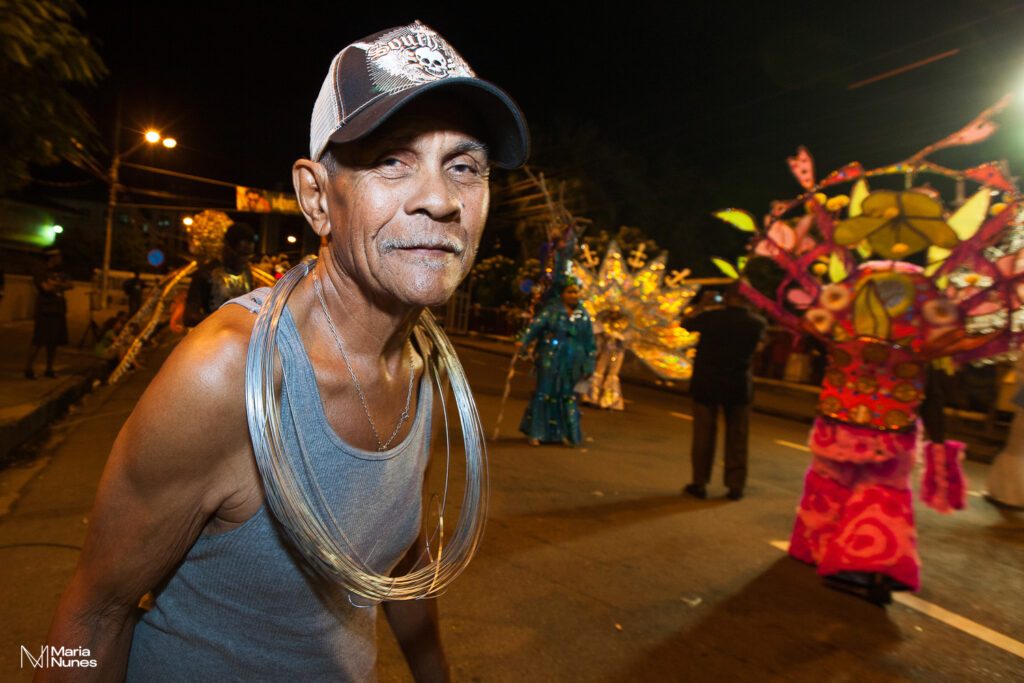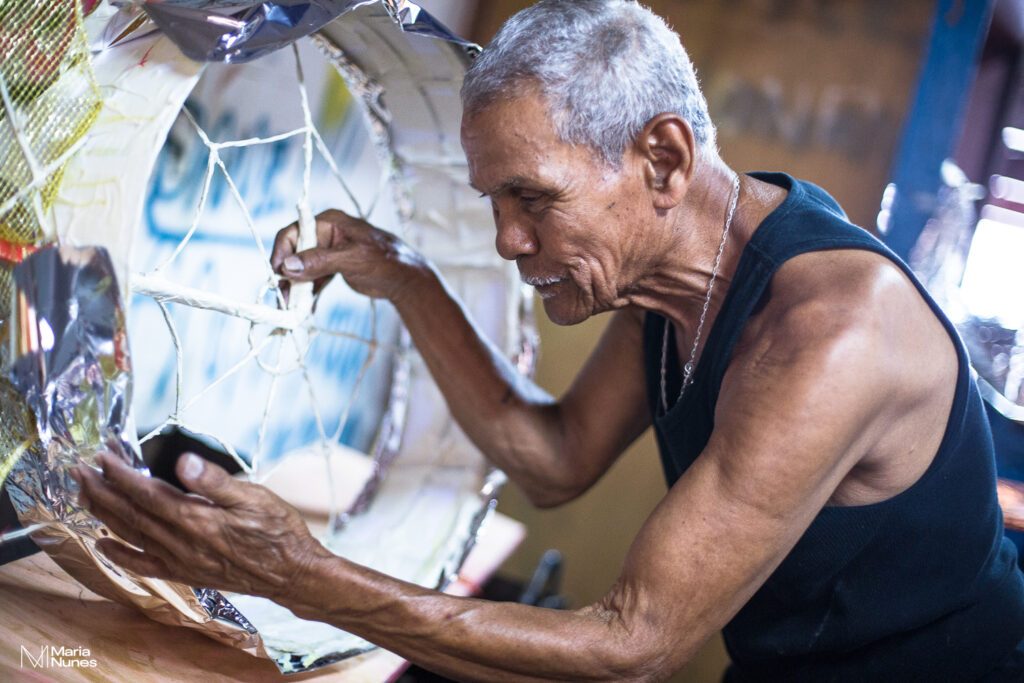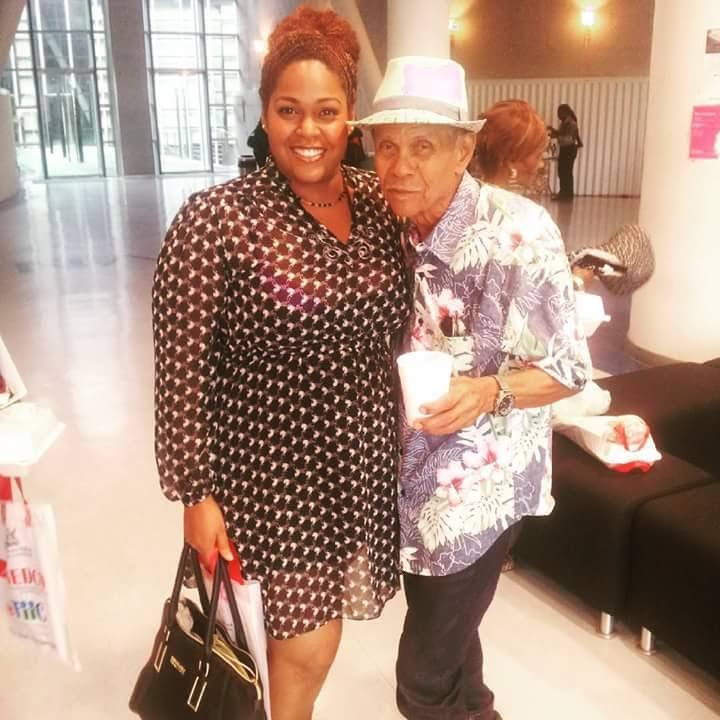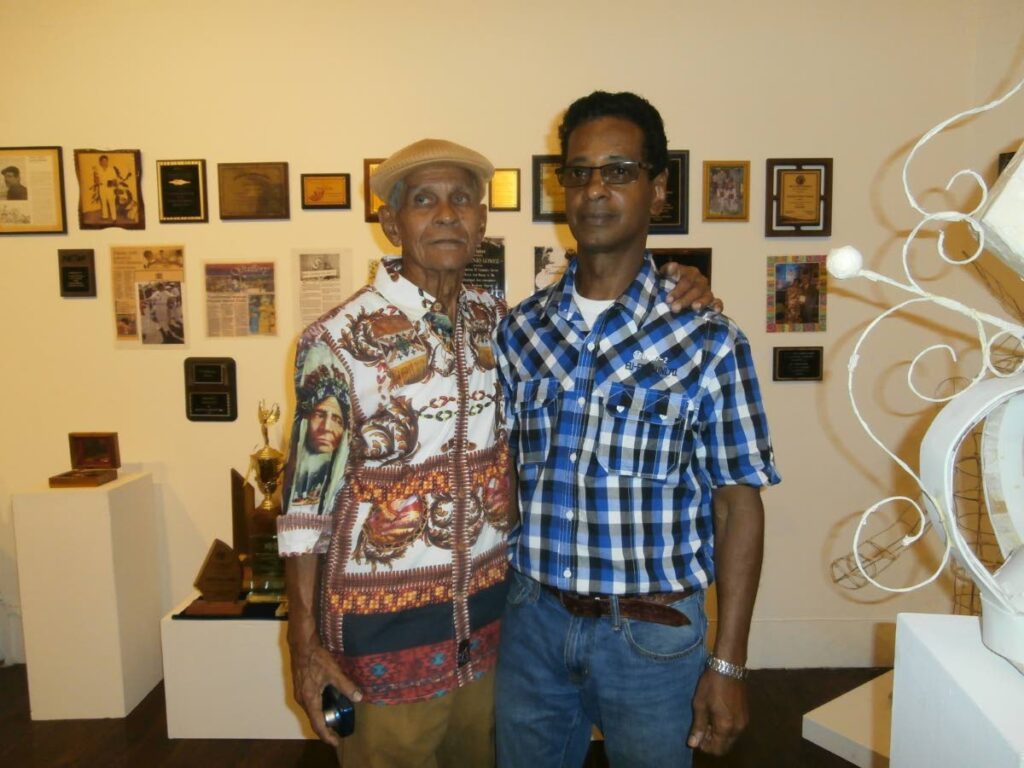Narcenio ‘Senor’ Gomez: Remembering a Carnival icon

Narcenio "Senor" Gomez will forever stand as a hero in Trinidad and Tobago’s Carnival.
A master wirebender and costume designer, Gomez’s intense passion for culture and creativity marks an inspirational life that should never be forgotten.
Much like the wire he expertly manipulated to construct stunning costumes, so too have his decades of work laid the foundation of Carnival through traditional mas.
The son of Venezuelan immigrants, Gomez was born on June 11, 1931, in Port of Spain. As a child from “behind the bridge,” he was exposed to the very heart of Carnival during his formative years.
He was always fascinated by Carnival, particularly drawn to the sweetness and edgy allure of the steelbands and the vibrant mas parades on Carnival Monday and Tuesday.
His initiation into the art of wirebending came courtesy of Buree Thomas, a skilled mas maker and carpenter. Thomas happened to be the brother-in-law of Gomez's classmate, Allen Mottley, from Nelson Street Boys’ RC School, Port of Spain.
Gomez would often see Thomas at work when he visited Mottley’s house after school. In a 2015 Newsday interview, Gomez said, “I used to see Buree making papier-mâché and bending wire. He saw that I showed an interest and said he would teach me.”
Thus began Gomez’s journey into the world of wirebending – an artform that would eventually define his life’s purpose.
Gomez’s extensive body of work spans over five decades, encompassing designing for his own bands, crafting individual costumes, and being sought after by other bands for his expertise in costume creation.
He had his start with Destination Tokyo then moved onto forming his own steelband/mas band with pan legend Winston “Spree” Simon – called the Johannesburg Fascinators Steel Orchestra. He also worked with Renegades, Blue Diamonds, Jewel Twenty Two, Silver Stars, All Stars, City Syncopators, Kentuckians, and Saldhem.
During this period, a robust cultural collaboration unfolded between the masmen and the steelband, with Gomez playing a pivotal role in this movement. This alliance proved highly successful for Gomez, emerging as one of his most noteworthy achievements.
Panman Oswald “Gold” Piper of Blue Diamonds and Jewel 22, grew up in the same area as Gomez, who he describes as a “father for the neighbourhood.”
As a teen, he would assist Gomez in making costumes in the role of “paperman” – responsible for plastering the wire with papier-mâché to prepare it for the application of decorations. He was amazed by the craftsmanship exhibited by Gomez, who designed a range of pieces such as woodpeckers, birds, horses and boats.
As a member of Blue Diamonds, a steelband established within the community, Piper said it was only natural that they enlisted the services of the “genius” in their midst to design fancy sailor costumes for the band. Over the course of several years, Gomez would outfit the band for Carnival.
“I love sailor mas.” Gomez said in a 2015 Newsday interview. “The sailor outfit is basic, so you have to be creative. I love it.”
His fancy sailor costumes had elaborate headpieces, sometimes known as “head mas,” made of different figurines that he sculpted out of wire, such as helicopters, boots, even recreating Disney characters such as Donald Duck.

Not only did he create costumes for the musicians in the band, but he also designed individual costumes for kings and queens for the band – sometimes playing king alongside the queen portrayed by his beloved wife Linda.
Gomez received multiple accolades over the course of his career for his exceptional costume designs. His band won the title of Best Costume Steelband in both 1983 and 1984. He crafted costumes for individual Carnival kings such as Curtis Eustace and Carnival queens such as Jean Assing and Muriel Haynes.
Going beyond local boundaries, he ventured into international mas, participating in carnivals in Venezuela, where he clinched the title of Best Foreign Band on two separate occasions. He was successful outside of the Carnival arena as well, designing for competitions such as Best Village.
Marilyn Gaymes, who worked in the regional department of the National Carnival Commission (NCC) and the Carnival Institute, noted that one of the distinguishing features of Gomez’s skill was his ability to bend wire freehand. This unique skill set elevated him to the status of a "premium" wirebender.
Commenting on his proficiency with freehand wire-bending, Gomez told Newsday in 2015 that the skill evolved naturally out of years of practice.
“People are always amazed that I could make anything without using a picture or measurements. I used to draw my subject first, but then, as I got versed in it, I do it freehand. This thing is embedded in me now. I don’t need any photo or measuring tape to bring something alive.”

A true servant of the artform, with a strong sense of duty to his culture and community, Gomez taught wire-bending and design locally and abroad for many years. He delivered lectures and facilitated workshops in the Caribbean, Venezuela, England, the United States and Zimbabwe.
One such workshop was the 2015 Mentoring by the Masters programme, an initiative of the Ministry of Community Development, Culture and the Arts. This was a training programme that provided an opportunity for creatives to receive mentorship from experts in their various fields.
Elize Rostant, lead of the cultural industries team at the Ministry at the time, had oversight in implementing the programme. The aim was to create an enabling environment for creatives to succeed under the tutelage of professionals.
“We had felt that there were some traditional skills, when it came to the arts, and in this case, the Carnival arts in particular, that we wanted to have people engage with and build up their skills around.”
As team lead, Rostant was tasked with contacting Gomez to determine if he would be interested and available to be a mentor at the programme.
“I made an appointment to go see him at his home in Port of Spain and from the very first meeting, I realised that I was with a very, very special human being.”
These sentiments were echoed by his students, who describe Gomez as charismatic, supportive, humble and inspiring.
Marisa Joseph, a creative and former art teacher, who worked in the Carnival industry as a costume finisher at that time, was one of his students. She described him as “a wonderful person and a true character in every sense of the word.” To her, he was like a living archive of Carnival history.

“He had a very vibrant way of informal teaching that (from) a basic conversation with him, you would always learn something...about himself, his craft, and the Carnival culture itself.”
Joseph said Gomez motivated his students to be fearless and innovative with their creations. In his classroom – experimentation and creativity were supreme.
“He encouraged you to discover the possibilities through the mas and the skill,” Joseph said.
Antonio Butts, visual artist and NCC competition co-ordinator and judge, another one of Gomez’s students spoke of Gomez’s supportive approach as a mentor.
“I really felt that he awakened something in me...I felt empowered...so I would come home and practise and practise because he had a lot of faith in me.”
Butts spoke highly of his mentor’s relationship and like Joseph, they continue to use the skills they learnt in Gomez’s workshop in their respective creative output today.

A champion for his community, Gomez remained dedicated to service throughout his life, ever willing to share and help his community, especially the younger generation.
Piper remembered Gomez to be a “very respectable person...all the kids in the neighbourhood used to call him ‘Uncle Senor.’ Around Carnival time he would make costumes for all the kids.”
In 2014, the South Port of Spain Community Council acknowledged Gomez, a longstanding member of the council, with a service award, recognising his exceptional contributions to the community.
Gaymes emphasised the significance of traditional mas, highlighting that icons like Gomez play a crucial role in the culture. Their participation in the mas goes beyond financial gain, reflecting a profound commitment to celebrating and nurturing the cultural heritage.
“Traditional masqueraders are a very unique, genuine, passionate people for culture...From my experience with them over the years, it’s not about the money but it’s about keeping this tradition alive.”

Gomez’s body of work and unwavering dedication stand as an extraordinary accomplishment, leaving behind a profound and remarkable legacy.
Gomez died of cancer in December 2016. His funeral drew a substantial turnout of admirers, community members, family, friends, and colleagues from the industry to pay respects to this titan of the arts.
Joseph said it best, "Gomez will be remembered as a man and a masquerader of the people.”

Comments
"Narcenio ‘Senor’ Gomez: Remembering a Carnival icon"